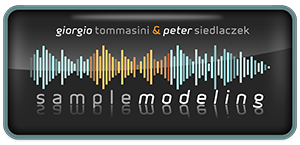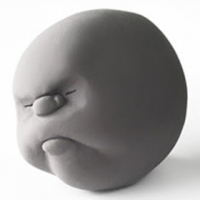Legato Settings
Hey all,
So I purchased SM Solo and Ensemble Strings several weeks ago and I'm hitting an absolute roadblock with legato. I would love your input because (as much as I love the library), I'm so close to just shelving it and writing it off as a loss.
I simply cannot get a realistic legato sound. I've read the manual forwards and backwards and made a huge matrix of all the variables involved (note velocity, note overlap, CC26, CC27, CC38, etc). I've been painstakingly going through variable by variable and I simply cannot get a smooth, bowed, unbroken legato sound.
If you will indulge me, someone please share the settings you use to get a true legato sound. Let's say I simply want to walk up and back down a C major scale starting at middle C. 1/4th notes at 120 bpm. What settings would I use for the following variables?
- Note-on velocity
- Note-on overlap (in miliseconds)
- Attack Time (CC26)
- Release Time (CC27)
- Attack Intensity (CC28)
- Portamento Time (CC5)
- Any other setting you think would help.
I am so grateful for your help!


Comments
I am not decently knowledgeable with neither of violin playing nor Midi composing, so just a theoretical comment.
What is "legato" with a violin ?
If on the same string you can slide your finger while bowing, lift a finger, press down an additional finger. If changing on a different string you can change the bow angle to hit the other string with a longer or shorter double note. I am sure there are a lot more options.
-Michael
kylecparton,
would you like to upload an example of what you consider an unsuitable legato?
BTW, please consider that, in the default state, legato duration is only dependent on the overlapped note velocity (which you did not mention) and CC26 (the higher the longer). Portamenti up to one-second duration are obtainable by setting CC26 to 127 and playing the overlapped note at the lowest velocity. Normal legato is obtained by setting CC26 to 64 and playing the overlapped note at virtually any velocity. This is true for keyboard mode. In case you are using BC or WC, the situation is different. Please clarify.
Giorgio
Hey Giorgio!
I appreciate your reply so very much. I've started over and uploaded two examples of a legato test. This is the Violin I dry ensemble with no other effects. CC26 = 64 and I didn't change any other settings. All velocities are 70.
I am not using a BS or WC. Just keyboard and manually inputting it into Logic Pro X.
On the first example, the overlapped note is 30ms early. The second sample is the same thing except it's 60ms early. It's unclear to me if the amount of overlap (in ms) is a factor or not.
I am trying to get the sound of a bowed legato, but to me it still sounds like a bow change between each note. What else can I adjust?
I doubt that you'll ever get a realistic sounding piece of music with "manual input" with this kind of software instrument, which is all about real time modulation.
If you play keyboard, I recommend trying it with a Seaboard.
-Michael
Dear Kyle,
I think I can provide you with some suggestions, but first of all we must find a common understanding of the legato style and sound you were looking for. In the example you posted, I hear a correctly simulated fingered legato, with the following limitations:
Then we may enter in more details, but to suggest the proper set of parameters, I would love you point to a real violin dry performance (e.g. form the several violin tutorials about legato you may find in YouTube) and we all match to a precise and real-life benchmark. Would you please?
In addition you may send me the MIDI or Logic file, and I can send it back edited for your convenience.
thanks, looking forward to helping you, Fabio
Hello OP.
As a string player, I can definitely relate to your issue and am having the same exact issue myself.
Anyone found a solution or am able to help?
The sound is absolutely dominant but even when messing with CCs, I'm getting a major "gap" of sound in my legatos.
IMHO, "slur" legato is not a new note but a pitch bend. I feel that the strings do this nicely.
-Michael
Figured it out.
@kylecparton In case you are still trying to figure it out,
you can achieve a very close to real "smooth" legato, that is one with less audible transitions, by taking advantage of the portamento engine, which in this VST affects even average legato.
You want to make cc5 have priority, make dynamics not affected by velocity, set cc5 to near zero, then set cc26 to near 0.
What you get from this is a much more glossy, smooth/buttery legato that will often pop up in notes that are (expressively) played in 1 bow, contrary to the equally as important bowed legato that comes out of box.
I have attached a demo of what this sounds like out of box, V.S. after these settings are applied, in a short snippet using the same MIDI where these differences are prevalent. Hopefully this helps you as much as it did for me 😀
https://soundcloud.com/wesley-trentacosta/out-of-box-legato-vs-smooth-legato-demo/s-z7yzFU5Ccxj